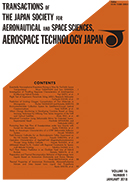Hayabusa2 is a current sample return mission spacecraft developed by JAXA. One of the most important scientific objectives of Hayabusa2 is to investigate the chemical and physical properties of the internal materials and structures of the asteroid Ryugu. To achieve this goal, we developed a new device called the small carry-on impactor (SCI). The SCI is a kinetic impactor that is being used to create an artificial crater on the surface of Ryugu. It has no attitude or orbit control device. The helical spring in the separation mechanism provides both separation force and spin torque to the SCI. The impact accuracy of the SCI depends heavily on the separation accuracy. Repeating a large number of separation tests is a straightforward approach to evaluate the separation accuracy. However, that is not realistic. Hence, first we performed several element tests to understand the separation dynamics. Then, the final separation accuracy was evaluated through a small number of separation tests, and this was followed by simulations that used the results of the element tests. This paper provides an overview of the separation mechanism, the results of development testing analyzed in detail, and a summary of the separation performance.
抄録全体を表示
